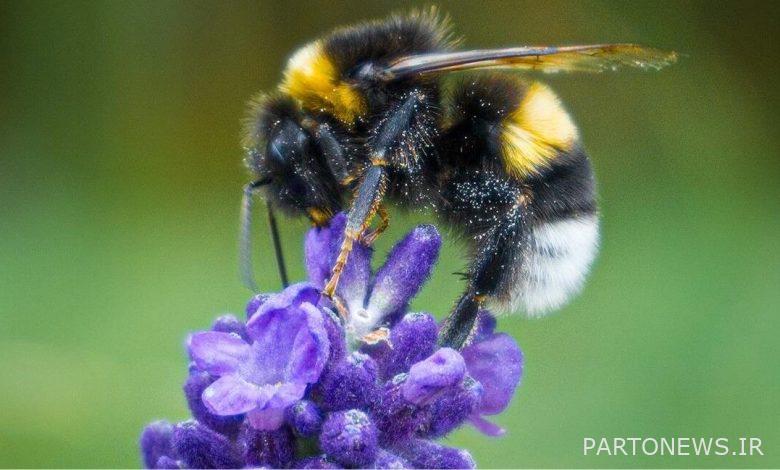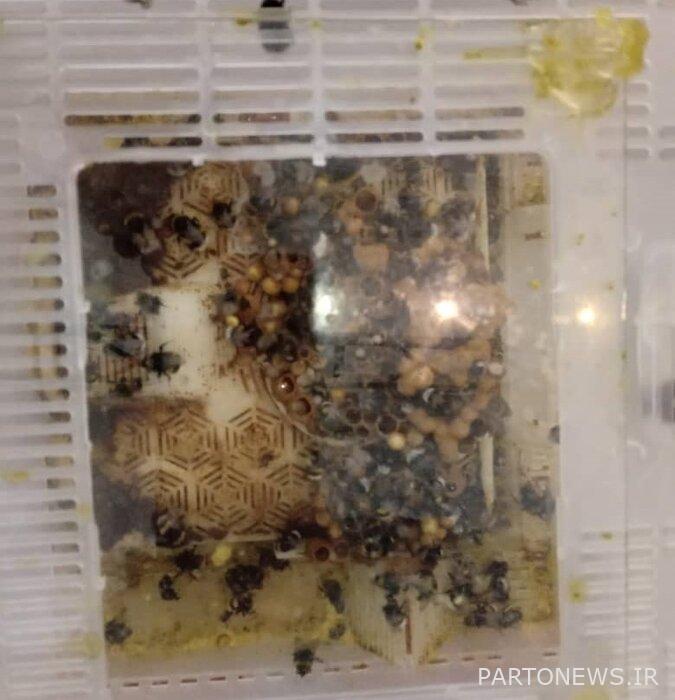Production of velvet bees compatible with Iran’s climatic conditions / If we are not supported today, we will become importers next year + photos and videos

Pollinating velvet bees Mouthworms (Hymenoptera) belonging to the pollinating bee family (Apoidea) are very successful insects. All pollinating bees feed on nectar and plant pollen throughout their lives.
In a community of pollinating bees, adults collect nutrients for their young so that their young do not need to move; Because these bees are worm-like in infancy or larvae, they are generally weak, defenseless, and have very limited movement.
Lifestyle of pollinating bees Among the velvet bees is colonial or social. Across the range of pollinating bees, especially in the temperate zone of the Northern Hemisphere, velvet bees are abundant as native pollinators on crops as well as on wild plants. In this way, many plants are adapted for pollination by velvet bees.
Research on how to use velvet bees as pollinators dates back to about one hundred years ago. Mass breeding of these bees in the world has a relatively long history (about 35 years), but its scientific and experimental information is available to large commercial companies and is less published.
Respiratory system of velvet bees It is similar to other bees, but the remarkable thing about these bees is that the air enters and leaves the air during flight through the airways of the cage, which causes a buzzing sound or so-called buzzing in these bees. This action has an effective role in increasing the pollination capacity.
Alireza Monfared, CEO of Dena Ecology Foundation, in an interview with IRNA Regarding the breeding of these bees in Iran, he said: “We breed greenhouse pollinating bees called velvet bees in Iran.” The body of these bees is covered with branched hairs and they have a high ability to transfer pollen grains.
He added: “The important point in the biology of these bees is that they use only nectar and pollen of plants to feed their babies and their growth, and on the other hand, they cause pollination and production of seeds and fruits in plants.” This causes many rangeland, agricultural and greenhouse crops to be pollinated by these bees.
“Velvet bees have been produced since 1969 in Belgium and the Netherlands, and then in some European, American and Asian countries,” he said. These bees are also a family of bees, but they have many differences in appearance, structure and behavior. These differences make them suitable for indoor use and pollination of greenhouse crops.
“The use of these bees in pollination is one of the aspects of modern agriculture,” he said. Pollinators are very important for the future of Iranian agriculture. We will face a water crisis in the future, and our horticulture and agriculture will become greenhouses. In such a climate, velvet bees can be very helpful.
The CEO of this knowledge-based company stated: According to foreign and domestic researches, increasing the amount of product as a result of using velvet bee colonies in greenhouses in different products is between 30 to 100%, which is very significant from an economic point of view. In addition, the quality of the fruit improves compared to other methods of pollination. These bees can do buzzing, which is absolutely necessary in certain crops such as tomatoes.
Production of Osmia bees
He goes on to describe the company’s production capacity in breeding Pollinating bees in apple and almond orchards (Osmia) He also pointed out and said: There are more than 500,000 hectares of apple and almond orchards in Iran. One of the problems of apple and almond orchards in Iran is the lack of pollination, which can be solved by mass breeding of specialized bees. It is possible to solve the problem of lack or reduction of pollination and inoculation. Has mass production of these bees in Iran. By breeding this species, the problem of non-pollination or reduction of pollination will be solved.
If we do not produce these bees, we will become dependent on other countries
The CEO reminded: European countries are studying this species of bee (Osmia), the price of which is currently over four million tomans in Europe. They plan to bring this species into our apple and almond orchards and even asked me to help them.
Monfared said: The Europeans have a plan, while we have this bee in Iran and we can produce it, why not produce it now, later we will have to import it from abroad at several times the price.
He added: “We went to the Ministry of Jihad and universities many times to produce these products, but they said we do not need velvet bees and it is not a priority.” Osmia is currently being produced in Switzerland and Belgium and plans to import it to Iran and other countries in a few years. In this way, we become dependent on these countries in this regard. Unfortunately, due to lack of knowledge, our experts do not care about this issue, and on the other hand, investors invest very little in living organisms.
Benefits of Velvet and Osmia Bees
Monfared said about the benefits of velvet and Osmia bees: With increased pollination and complete inoculation by velvet and osmia bees, garden yield increases by 30 to 100%.
He added: “Existing alternatives (bees) have problems and using them will not achieve the desired result.”

وی Quick availability of the product, its lower price compared to foreign counterparts, preventing the outflow of currency, providing a healthy product to farmers and greenhouse owners and providing after-sales service are other advantages of this Iranian product.
Monfared said: The foreign product may contain ticks, viruses and bacteria that will cause problems for our bees and plants in the future, while the Iranian product does not have these problems, while we can provide advice and after-sales service while the company Foreigners are only represented here and can not provide the services we can provide. If a colony fails for any reason, we can quickly replace the new colony and fix their problems.
To value knowledge-based people to solve the country’s problems
He said that domestic production needs support so that the responsiveness of the domestic market can reach exports that have currency for the country. And it is Iran. This makes it possible to produce an indigenous breed that is compatible with Iranian conditions.
Monfared said about the realization of the slogan of the year: to solve the problems of the country, there is no other way but to value knowledge-based companies. This year, the Supreme Leader of the Revolution named it, which I hope will be a start. The problems of any country must be solved through science and knowledge; So it makes perfect sense to look for knowledge-based companies.
He added: “In order to fulfill this slogan, it is better for our experts to pay more attention to the laws enacted by the parliament and government bodies and allow the country’s youth to enter this field, and there is nothing wrong with making mistakes, but these mistakes move production forward.” Win and the problems of the country and employment are solved.
Monfared emphasized: A country can become rich if it exports and imports currency. How long do we have to pay for each small commodity and import it from abroad? It is better to produce it ourselves. We have nothing less than other countries.

